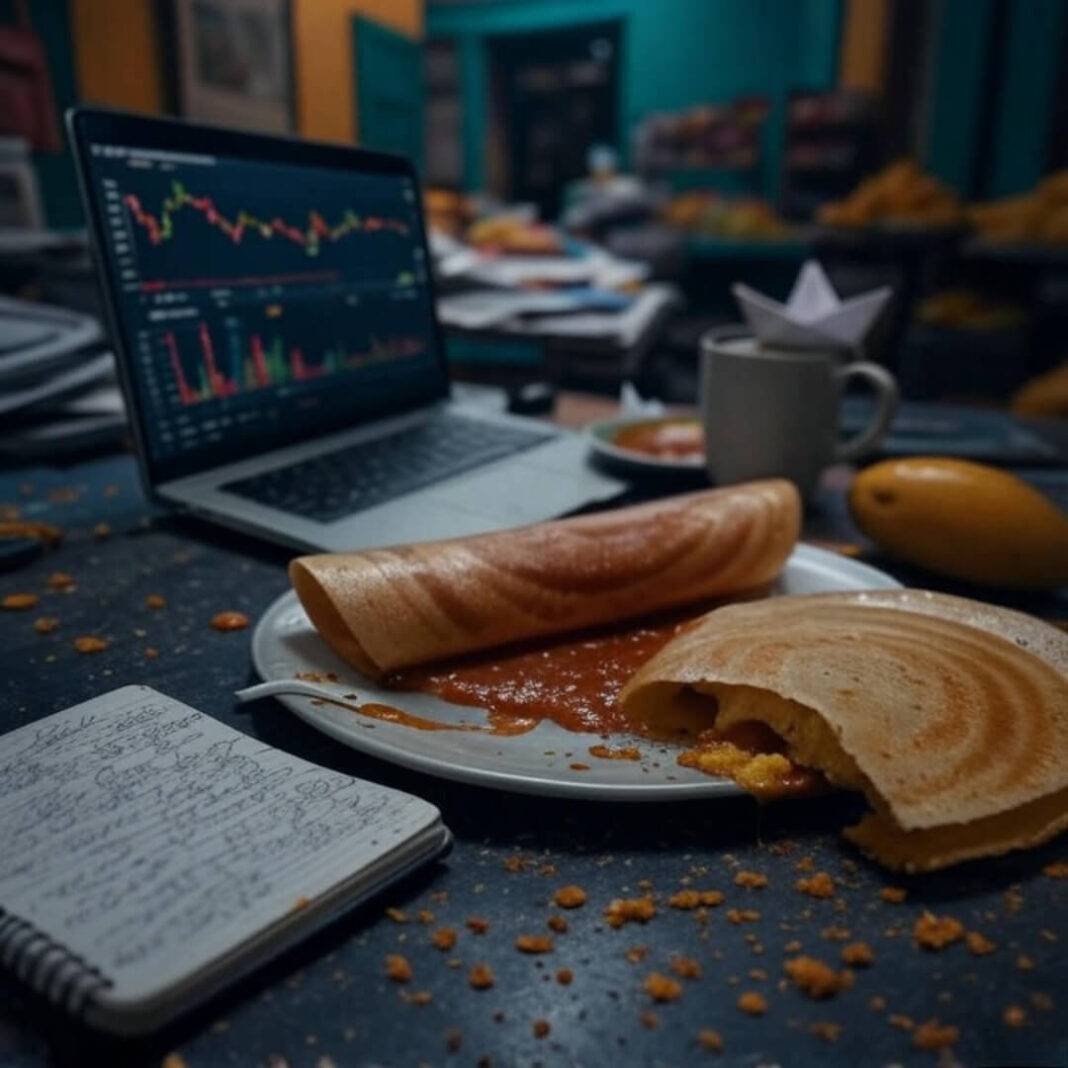Passive portfolio management sounds like a dream, right? Like, you just toss your money into some index funds, kick back with a Kingfisher beer, and watch your wealth grow while you nap under a ceiling fan in this sweaty Mumbai apartment. That’s what I thought when I moved here from the States, lured by the idea of “lazy investing.” Spoiler: my desk is a warzone of chai stains and Post-it notes, and my journey into passive investing has been anything but chill. I’m sitting here, the fan creaking overhead, traffic honking outside like a deranged orchestra, and I’m gonna spill the tea—pun intended—on how I stumbled into this low-effort wealth-building thing.
Back in 2023, I was that guy refreshing stock apps every five seconds, thinking I could outsmart the market. Burned out, broke, and honestly a little embarrassed by my Robinhood losses (don’t ask about my meme stock phase), I decided to try this passive portfolio management thing after reading about it on Investopedia. The idea? Buy broad market index funds or ETFs, hold them forever, and let the market do its thing. Sounds simple, but I made it messy.
Why Passive Portfolio Management Kinda Saved My Sanity
Let’s be real: I’m not cut out for day trading. My first attempt at passive investing was a Vanguard S&P 500 ETF (VOO), which I bought after a late-night Google spiral in my Bandra flat, surrounded by empty vada pav wrappers. The sensory overload here—spices from the street vendors, the humid air sticking to my skin—made me crave something simple. Passive portfolio management was it. Here’s why it worked for me:
- Low brainpower needed: I don’t have to analyze candlestick charts or predict Tesla’s next tweetstorm. I just buy and hold.
- Cheap as chai: Index funds and ETFs have crazy low fees compared to actively managed funds. Check out Vanguard’s fee comparison for proof.
- Diversification without drama: One fund gives me exposure to hundreds of companies. No more crying over a single stock tanking.
But, like, I still screwed it up at first. I kept checking my portfolio daily, stressing over every dip. Pro tip: don’t do that. It’s like checking your fridge every hour hoping new snacks appear.
My Biggest Passive Investing Screw-Up
Okay, here’s the embarrassing part. I thought “lazy investing” meant I could just yeet my money into one ETF and call it a day. Wrong. I didn’t diversify across asset classes—stocks, bonds, international markets—and my portfolio was lopsided as hell. I learned the hard way after a market dip in 2024 left me sweating more than a Mumbai summer. A quick read on Morningstar’s diversification guide saved my bacon. Now I split my cash across a total stock market ETF, a bond fund, and a smidge of international stocks. Balance, baby.

How I Actually Do Passive Portfolio Management Now
After my early fumbles, I’ve got a system—kinda. Here’s my lazy investor’s playbook, straight from my cluttered desk in Mumbai:
- Pick a few ETFs: I stick with low-cost ones like VOO, BND (bonds), and VXUS (international). Schwab’s ETF screener helped me find these.
- Automate everything: I set up auto-investments through my brokerage. Every month, my money flows in without me lifting a finger.
- Rebalance once a year: I check my portfolio around Diwali, when the festive vibes make me feel briefly organized. Adjust allocations, sip chai, done.
- Ignore the noise: Market crashes? I don’t care. Okay, I care a little, but I don’t sell. Long-term gains are the goal.
I’m not gonna lie, automating investments felt weird at first. Like, am I really trusting a computer to handle my cash? But after a year, my portfolio’s up, and I’m not glued to my phone anymore. The Mumbai traffic’s enough stress, you know?
The Time I Almost Ruined It
True story: last monsoon, I got cocky. Saw some X posts hyping crypto ETFs and nearly dumped my passive portfolio management plan to chase “the future.” Sitting in a Colaba café, rain hammering the windows, I almost hit “buy” on some sketchy fund. Thank God I didn’t. A quick reality check from Forbes’ passive investing guide reminded me: stick to the plan, dummy. Chasing trends is the opposite of lazy investing.

Tips for Your Own Lazy Investing Journey
Look, I’m no Warren Buffett. I’m just a guy in Mumbai, dodging rickshaws and trying to make my money work without losing my mind. Here’s what I’ve learned about passive portfolio management:
- Start small, but start: You don’t need a fortune. I began with $500, scraped together from skipping overpriced Bandra brunches.
- Learn from my dumb mistakes: Diversify across stocks, bonds, and international markets. Don’t put all your eggs in one ETF basket.
- Find a vibe check: Use free tools like Personal Capital to track your portfolio without obsessing.
- Embrace the boredom: Passive investing isn’t sexy. It’s like waiting for a good biryani—slow but worth it.
Sometimes I still doubt myself, wondering if I should be more “active.” Then I look at my cluttered desk, smell the street food wafting in, and think, “Nah, lazy’s my jam.”
Wrapping Up This Passive Portfolio Management Rant
So, yeah, passive portfolio management isn’t perfect, but it’s kept me sane in this wild Mumbai life. My apartment smells like curry, my portfolio’s quietly growing, and I’m not stressing over stock tickers anymore. If I can pull this off—chai stains, messy notebook, and all—you can too. Seriously, give it a shot. Check out a low-cost ETF, set up auto-investments, and go live your life. Got questions? Hit me up on X—I’m probably procrastinating anyway.






